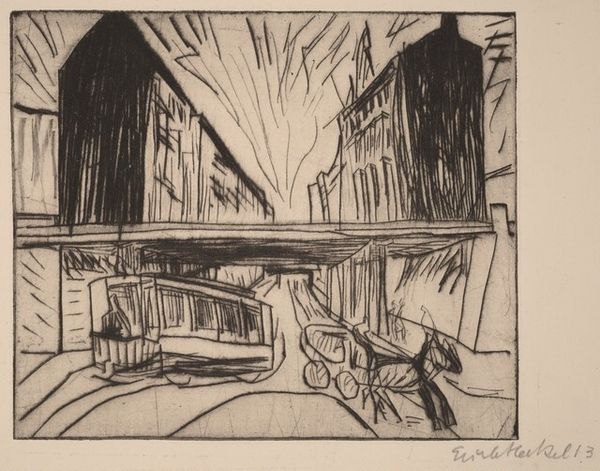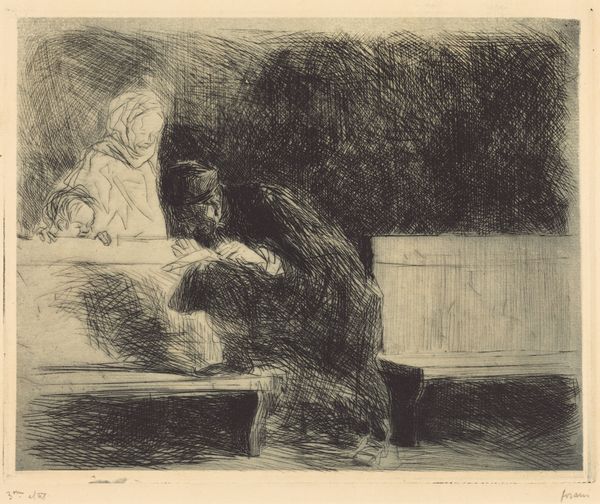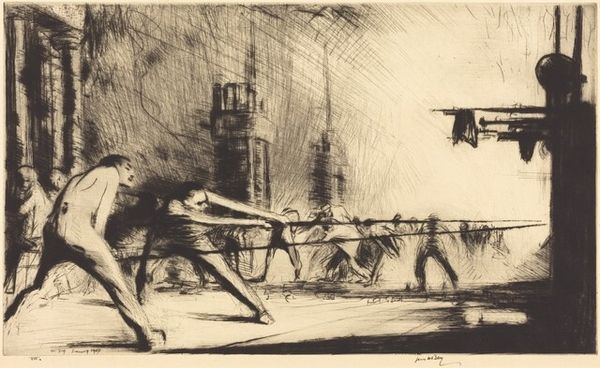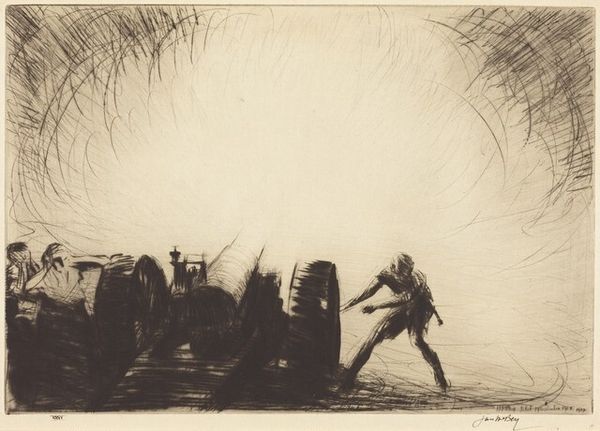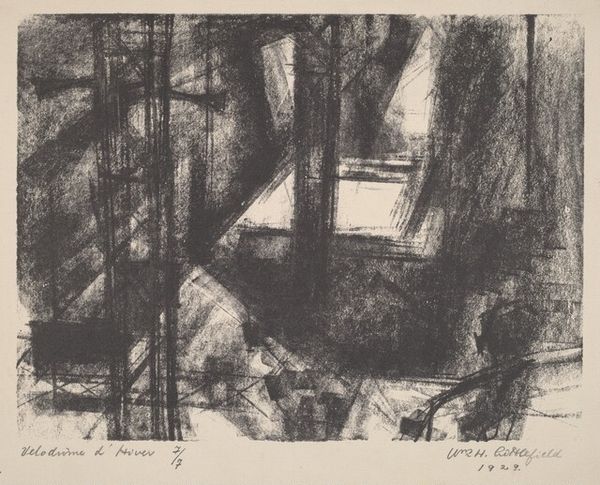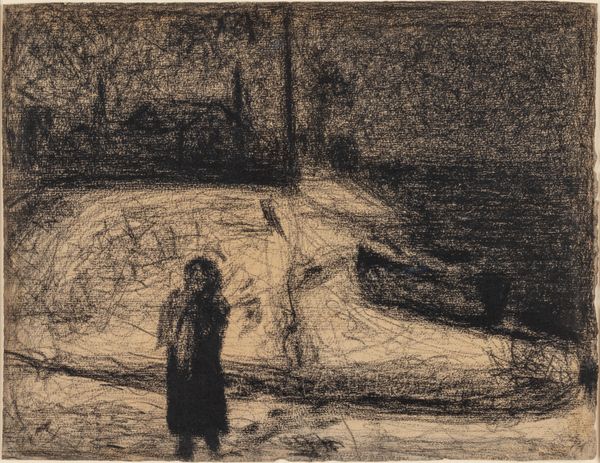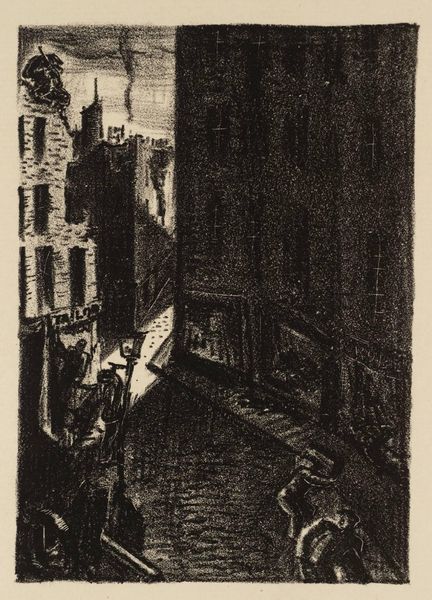
Dimensions: 17.5 x 20.8 cm
Copyright: Public domain US
Editor: So, this is Edward Hopper's "Night Shadows," an etching from 1921, currently residing at the Philadelphia Museum of Art. I'm immediately struck by the stark contrast between light and shadow – it creates such a strong feeling of isolation, especially with that one figure walking alone. What do you make of the visual dynamics at play here? Curator: The effectiveness of “Night Shadows” resides significantly in its composition. Observe the dominant diagonal created by the stark beam of light bisecting the picture plane. How does this divide the visual field, creating distinct zones of illumination and obscurity? Note, too, the geometric precision, almost architectural, despite its being a street scene. Editor: It almost feels like the light is spotlighting the figure, emphasizing their solitude. It seems intentional, creating such a visually potent mood. Is it a matter of the light vs dark or is it the scale as well? Curator: Indeed. And consider the relationship between the figure and the building looming overhead. Does the disproportionate scale evoke feelings of alienation or urban anonymity? Further, scrutinize the hatching and cross-hatching techniques used to render shadow. Do you perceive a consistent directionality, or does Hopper employ varied mark-making to delineate texture and form? Editor: I notice that the etching creates very deliberate directional marks, almost like miniature maps for our eyes to navigate through darkness, highlighting how Hopper intentionally guides our gaze. It really makes you appreciate the meticulousness of printmaking. Curator: Precisely. By carefully observing the formal elements - light, shadow, line, and form - one begins to discern how Hopper orchestrates these elements to construct a visual narrative of urban experience. The image offers an excellent study in contrasts. Editor: I didn't think about it that way at first but focusing on form, texture, and contrast makes this print so interesting.
Comments
No comments
Be the first to comment and join the conversation on the ultimate creative platform.

